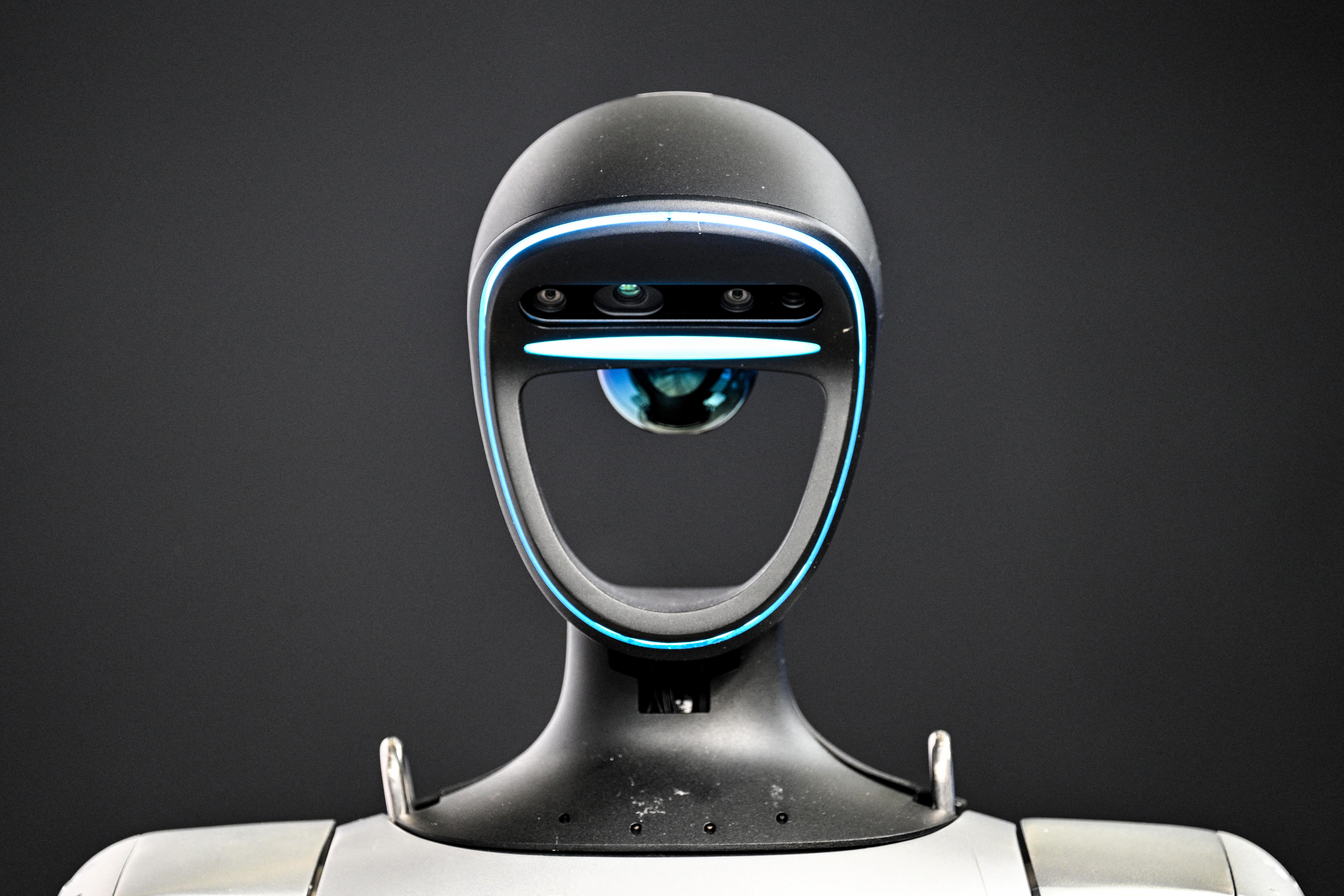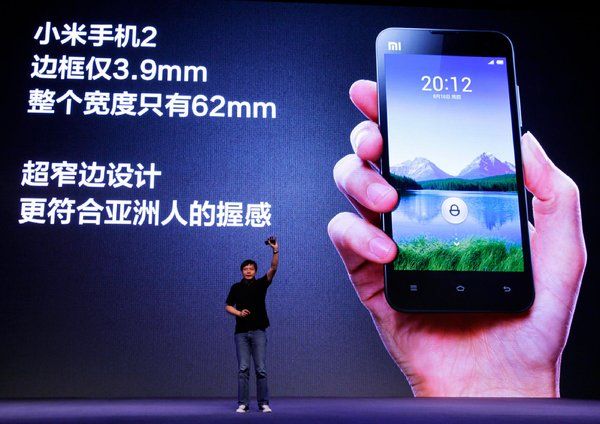A ‘historic pivot’ is happening in tech. The era of US dominance is over
DeepSeek vs ChatGPT, Temu vs Amazon, TikTok vs Facebook, BYD vs Tesla – China has gone from copycat to competitor, writes Anthony Cuthbertson, as the US’s global tech dominance reaches a tipping point


Dressed in a black turtleneck and jeans, the head of the world’s fastest-growing tech company stood on stage holding a new phone aloft. It was August 2012 – 10 months after Steve Jobs died – and Xiaomi chief executive Lei Jun had decided to imitate the late Apple boss in both his outfit choice and the iPhone-looking device in his hand.
It was not the first knock-off to be unveiled in China that year. Other emerging startups like HiPhone, Goophone and Meizu all joined Xiaomi in creating cheap Apple clones – and it wasn’t just phones. Baidu was viewed as a poor imitation of Google, Alibaba was dismissed as China’s eBay, while Weibo was known as the Chinese version of Twitter.
The New York Times described China in 2013 as “a country where products like iPhones are made but rarely invented”, while Time magazine ran a 3,000-word article that year headlined “Why China Can’t Create Anything”.
“The innovation that takes place in China tends to build upon existing technology, not generate revolutionary ideas,” the article’s author wrote, referencing what is now referred to as China’s “copycat era”.
The Great Firewall of China, which kept the country’s internet separate from the rest of the world, meant that US tech companies rarely made their way into the country – but none left. There were no Chinese apps that became popular in the early days of the iPhone, nor any social networks that made a dent in English-speaking markets.
A 2014 article in the Harvard Business Review lamented how China had gone from a country that invented the compass, gunpowder and paper, to one that favoured imitation over innovation. The report concluded: “Can China lead? On this we have our doubts.”
But just over a decade later, against all these projections, China may now be on the verge of toppling the tech dominance of the US. From apps and artificial intelligence to robots and rockets, China is turning into a world leader.

A report last September from the Information Technology and Innovation Foundation (ITIF), a Washington think tank, noted that China is “catching up, in many cases at an extremely rapid pace – and the scale of their efforts is massive”.
The analysts observed that China has entered a new stage in its economic development, becoming a “rival innovator” in advanced industries. Huge advances have been made in critical sectors like AI, while in some areas – like electric vehicles and batteries – it is even taking the lead through an onslaught of technological breakthroughs and brainpower.
“To use an analogy,” the report noted, “it’s as if we were to look out at the ocean and see calm waves, but over the horizon is a tsunami of hundreds of strong, innovative, and lower-cost Chinese firms in dozens of industries seeking to grab global market share from established leaders.”
The same month that report was published, TikTok topped the app charts in the US – beating the American-made Instagram. Fellow Chinese app Temu was the most downloaded e-commerce app, while BYD was on its way to becoming the global leader in electric vehicles – 13 years after Elon Musk had scoffed at the idea of the Chinese automaker being considered a rival to Tesla.
Just three months after ITIF’s report, the release of DeepSeek caused further panic in the US tech industry. The unexpected arrival of such an advanced AI model from an unknown Chinese startup resulted in more than $1 trillion in total losses for US tech stocks, as investors began to doubt the status quo.
“The launch of DeepSeek underscored a historic pivot in the balance of technological power,” said Nigel Green, chief executive of global financial advisory and asset management firm deVere Group.
“The implications of this AI breakthrough extend far beyond tech, touching on geopolitics and global trade … It highlights the accelerating pace of the ‘global AI arms race’, with China now firmly establishing itself as a serious competitor. This is not just about a single company; it represents a larger trend that will redefine the global economic landscape.”
This month, another AI model called Manus has added further ammunition to this AI arms race, leading to speculation that China may be on the brink of achieving the ultimate prize of human-level AI.
The success in artificial intelligence began in 2017, when China’s State Council issued its “Next-generation Artificial Intelligence Development Plan”. It outlined how China could “seize the major strategic opportunity for the development of AI” and become a global power in science and technology.
“China must accelerate the rapid application of AI, cultivating and expanding AI industries to inject new kinetic energy into China’s economic development,” stated a document detailing the plan, which included a blueprint for research, training, infrastructure, policies and regulations that would all push towards this goal.
The plan included exact target dates that are now being hit. “By 2025, China will achieve major breakthroughs in basic theories for AI,” the authors wrote, “such that some technologies and applications achieve a world-leading level.”
At China’s annual legislative meeting earlier this month, the two main topics were geopolitics and technology. President Xi Jinping further reportedly outlined plans for China to fully overtake its rivals, stressing the urgency for his country to become the world’s dominant technological superpower.
The US has tried to stifle China’s growth and repress its influence. In 2018, Washington introduced restrictions on what semiconductors could be exported to China, severely limiting access to the advanced chips needed for artificial intelligence development.
It forced China to come up with its own technologies – and workarounds. When DeepSeek was unveiled earlier this year, AI researchers were astonished that it could perform at a similar level to OpenAI’s ChatGPT at a fraction of the cost and computing power. If China takes the lead in this field, it could have profound implications for the world.
“If China establishes AI dominance, global technology standards would increasingly reflect Chinese priorities and values,” Dr Wei Xing, from the University of Sheffield’s School of Mathematical and Physical Sciences, told The Independent.
“Chinese AI systems would likely emphasise different objectives … beyond merely regulatory differences to fundamental cultural and philosophical distinctions in how AI should serve society. The fundamental values embedded in AI systems – how they make decisions, what they are trained for, and whose interests they serve – would reflect Chinese cultural perspectives on the relationship between individuals, technology, and the state.”
Despite the emergence of China as a genuine rival to the US, Dr Xing noted that it does not necessarily signal an end to the US’s dominance. Each country will likely continue to be competitive as each leverages its unique strengths.
This is a view shared by tech entrepreneur Claire Trachet, who founded the fundraising advisory firm Trachet. She claims that the fundamentals of US tech dominance remain intact, including the ability to raise capital, attract global talent, and build companies that scale internationally.
This could mean that rather than one country dominating, the balance could shift to two or more tech superpowers, perhaps including China, Europe and the US.
“China’s tech growth has been explosive in targeted areas like AI, EVs and, historically, payments – but that’s the result of long-term strategy, centralised investment, and a domestic market supporting rapid scale. This doesn’t mean the US is in decline,” Ms Trachet told The Independent.
“The US remains a magnet for capital, talent, and big ideas – especially because it brings together so many different voices and perspectives. At the same time, Europe is starting to see real momentum too … These facts are simply more evidence that we’re moving toward a multipolar tech world.”
Join our commenting forum
Join thought-provoking conversations, follow other Independent readers and see their replies
Comments